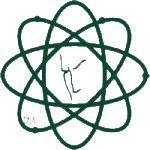What Evaluation Criteria Should I USE?

What Methods are Available?
Every consultant with a business card these days has a Root Cause Analysis process that they would like to offer your organization. And there is some value in all of them , no doubt. With over thirty years of Root Cause Analysis focus, we would like to provide you some way to view, evaluate, and navigate through the sea of RCA options that are marketed today. There are three basic categories of RCA approaches available. Some of the methods that exist perhaps belong partly in more than one group. Yet, virtually all processes that you will find through your evaluation will fall squarely within one of the below categories. REASON represents the pioneer and standard bearer for the third type of RCA solution available.
Three categories
Modeling/brainstorming tools: These are tools (either software or manual) that at their core are methods and tools for depicting how the investigator thinks an event happened. These tools typically are high in documentation value, but low in investigative value as the tools rarely push the user outside of the box of his own skills, mind, and experience.These tools simply model the facts and issues as the user sees them. Some of these tools provide some loose philosophy for creatively thinking through the event and solutions (brainstorming).Typically a group is formed, ideas discussed, educated guesses and opinions are recorded, and a group consensus is created through a vote. With these methods, general industry charting and modeling tools often are customized with special shapes and templates to model events in this genre. The advantages of these tools are that they can be really fast, and brainstorming about solutions can be a profitable exercise. The negative aspect of these tools are that they are the least rigorous solution and virtually devoid of real investigation aspects. This is because brainstorming and modeling tools are intended to drive creatively thinking through issues, and modeling tools simply document thingsneither of these activities lead users to conduct a serious investigation.


RCA Tool Box Approaches:These approaches offer a number (some offer over a dozen) of independent analysis methods (change analysis, barrier analysis, causal factor chartingetc) that are to be used in some combination that a user in the field must determine (pre-decide).These grab-bag compilations of old (RCA) analysis approaches are often bundled together and marketed under a single branded name as if they were a single process, when in fact their process represents many stitched together individual processes done in succession. Each process that they provide is of demonstrable value. For instance if you conduct a change analysis, the user walks away with good understanding of the changes involved in the event. But if that is all the user does he has a very one-dimensional view and understanding of the event. These grab-bag approaches acknowledge this issue, and so they offer other methods like barrier analysis, casual factor charting, human performance analysis and up to a dozen other analysis methods. Not one of their tools in their grab bag of analysis methods is sufficient enough to be used in all incident situations, and so their concept is that perhaps many different tools within their ‘tool box’ might be required to get a complete understanding of the event. In this “tool box’ approach, the user must learn and use several different tools and ways of thinking in order to succeed in producing a thorough investigation. Most often the tools that are provided contain pre-canned issues and template-type paths of inquiry to guide the user in his investigation. The advantage of these types of RCA solutions are that they lead the user into a more rigorous investigation process than do simple modeling tools, and they seem easy. The disadvantages of these fragmented systems are that the users are led by the process to explore pre-determined paths of thought, which often arrive at incomplete and pre-determined outcomesand often not the right ones. Also, the user must learn many different investigation/analysis tools. Additionally, its most often the case that users simply pick a tool from within the ‘tool box’ that they like the most, and use it exclusively regardless of what kind of event it is. Doing this is to the detriment of the methods stated overall concept that they should be using the most appropriate tool from the toolbox. Even when these approaches are perfectly deployed and practiced, users must learn many separate processes and mini-methods for different kinds of events and situations, which makes learning the tool-box-type methods difficult to deploy and use. In reality, these processes are never perfectly deployed and the process, due to its inexact grab bag nature, allows users to create reports and RCA investigations that are merely reflections of what they think happened in an event.
Causal-Focused RCA Tools: These tools are singularly focused on being efficient at uncovering a granular understanding of the step-by-step causation of an event (and its solutions).These methods are borne of a philosophy that the singular purpose of RCA is to understand not the million ways something could have happened, but rather the one way in which it did.The way that these methods attempt to guide the user is through a logic process that leads the user or team to model every cause and effect relationship within an incident. These approaches are singularly focused in creating a thorough, integrated, and detailed cause-and-effect model of each and every fact that played a causal role in the event. This creates a solid model for the user (or investigation team) to use. The users can then focus their knowledge and expertise between the points in time of each step of the model, in order to see how things could have been different in terms of new controls and solutions. REASON is the 30-year old pioneer and standard bearer for this approach. The advantages of these approaches include a more granular understanding of the event and a more focused correction action plan (not to mention a more complete discovery of all solution options).

Suggested Criteria for RCA Selection:
-
Decide what you want in an RCA tool?
If your employees are already crack problem solvers you might only need a modeling or brainstorming tool as defined in category 1 above. If you want a more organized approach, and feel that you can rely upon the unchecked assessments and solutions of your investigation teams, then approaches described in category 2 might be a reasonable alternative. We would have you consider category 3. REASON is the 30-year pioneer and leader in this genre of Root Cause Analysis process and tool. REASON9 is very efficient and fast without sacrificing logic validation, rigor, and thoroughness.
-
Does the process itself cause the user to validate and challenge how he sees the facts coming together?
Only REASON® has a guided discovery process, with a check for accuracy at each step, which challenges the investigator’s assumptions about the facts. In regards to REASON, a person is not investigating and performing RCA if he is just documenting what he thinks he already knows about an event. In REASON the process itself challenges the users assumptions and leads him to logically validate his thinking as he investigates. In our opinion, if the RCA method itself does not have within it a process that puts brakes on the person and challenges the users understanding of the facts, the person is just documenting his personal understanding and he is not investigating. The resulting reports of RCA processes that allow investigators to go unchecked in this way, are only as good as the investigators personal insights and assumptions. Such approaches contribute little to the discovery process. When the person goes unchecked by the RCA process, the investigation and the discovered solutions are not a product from a controlled and thorough RCA process, they are a reflection of the investigators experiences and personal knowledge and subjective judgement. Often, RCA methods with this deficiency will arrive at presupposed conclusions. There is a saying that all carpenters see the answers to the worlds problems in terms of hammers and nails. In this same way these methods lead and allow safety professionals to arrive at safety related solutions or maintenance professionals to dominantly find maintenance solutions, when in fact there were many other solutions to be discovered as well. The truth is, that each discipline may in fact offer opportunities to improve and prevent but without an objective method to discover, challenge and verify accuracy, management rarely gets full viability of all the available options.
-
Does the process provide concise easy to understand documentation?
Once the investigation has been completed, how hard is it to bring a professional report together? Additionally, how long does it take to communicate the event and its options? REASON has many automatic reports, including a narrative report that automatically writes the ‘story’ of what happened, explaining how the causes combined and interacted to produce the problem. There is also a report wizard that quickly leads the user through the building of a professional-level, customized incident report. Just as important is the automatic decision support data that REASON9 provides instantly and automatically. For example REASON can pinpoint and objectively compare the prevention impact of all discovered solutions.
-
Is the tool easy to deploy?
REASON is deployed on the web through a web page. The REASON(R) software is not really installed on your machine. It runs over the web, inside of a web browser. With a decision and the click of a button, regardless of your organizations size, you can deploy tools and training on that same day (onsite training is also available).
-
Is the training for the system easy to deploy?
REASON training is now available online. The training can be completed on your schedule and when your people have the time. The training is easy to understand, self-paced, powerful and cost effective. Now both Root Cause Analysis software and training can be delivered overnight to your entire team.
-
Are the tools and method user-friendly?
REASON is by far the easiest to understand and use RCA system on the planet! With REASONs over 30 years of experience, we have created a powerful, yet simple interface that teaches and guides the user along the process. There is never a time when a REASON user asks—what do I do next?. The process leads him step-by-step through a logic process that he applies to his situation and incident. It is simple, yet powerful. Its exactly what you would expect a tool that has been polished and improved over the course of 30 years to be!
